Advertisement
27,000 Pounds Of Gear: How The BSO Takes 100-Plus Musicians On Tour Halfway Across The Planet
Resume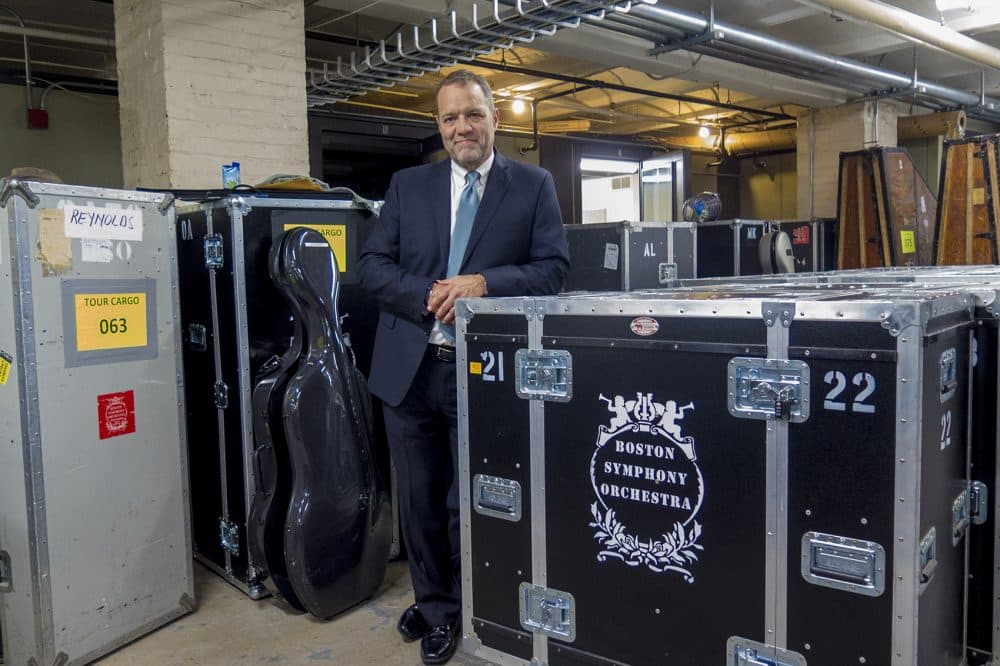
International travel can be daunting for anyone. Now imagine taking more than 100 musicians halfway across the globe — along with their expensive, sometimes bulky instruments. That’s the reality this week for the Boston Symphony Orchestra, which is embarking on a four-city, six-concert tour in Japan. I met with BSO stage manager John Demick and a few musicians to learn more about the logistical challenges they face while packing up.
It’s Demick’s job to make sure every instrument and piece of equipment needed in Nagoya, Osaka, Kawasaki and Tokyo gets where it needs to go.
“Those are our viola cases, and the violin cases are here,” he said as he showed me bulky trunks of various sizes filling Symphony Hall’s sprawling basement.
He opened one locker-like section of a case to reveal its soft, cocoon-ish innards. “So as you can see inside these, they have individual combination locks and they're very well-padded,” Demick explained.
In all, 163 pieces of specialized luggage will make the trip to Asia.
“We travel with about 27,000 pounds of gear,” Demick told me, “the valuation of which is somewhere around $20 million.”
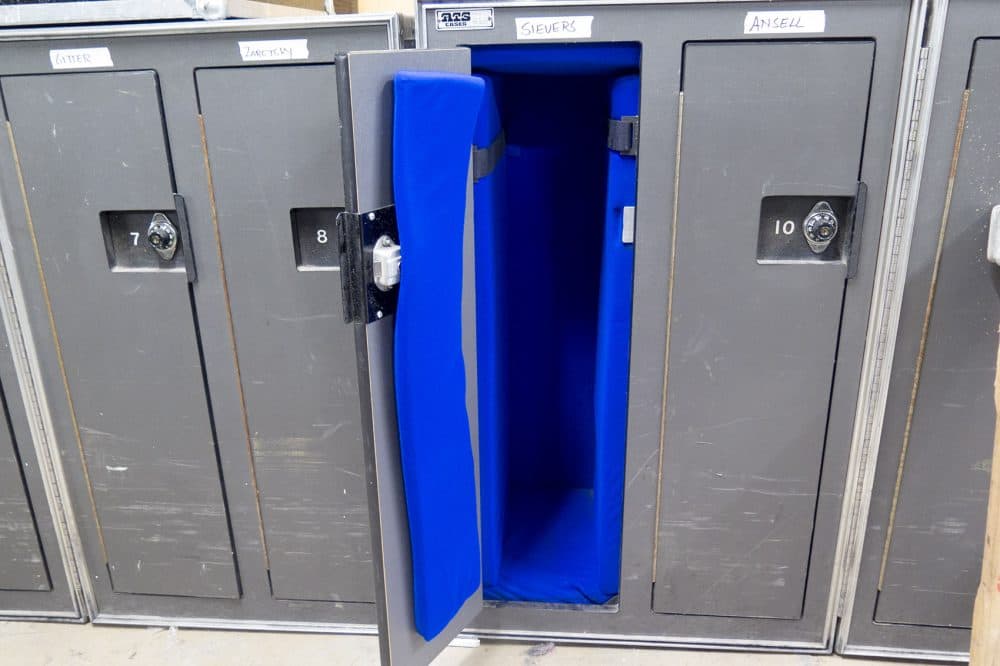
The gear and instruments range from specialized musician stools to precious, delicate violins, to some orchestra behemoths.
Assistant principal bassist Lawrence Wolfe stood next to his looming double bass case.
“I'm 6-foot-4 and this case is easily 7 feet tall, and about 3 feet deep, and about 2 1/2 feet wide,” he described, “And I'm in a room full of these cases and all of these cases are the size of coffins.”
Wolfe’s been with the BSO for nearly 50 years and remembers when the orchestra used to fly on the same planes with their instruments. Now his bass and most of the other pieces travel separately — first in two 53-foot, climate-controlled trucks. “Just picture two tractor trailers that you see driving down the highway every day basically filled back to front and bottom to top with instruments,” Demick said.
Then, he said, the trunks will be secured in cargo plane palettes that look like big cookie sheets. “I think it would be the sheer volume that we take would really astound people,” Demick mused, “to get a full orchestra and staff to travel overseas and get things from point to point.”
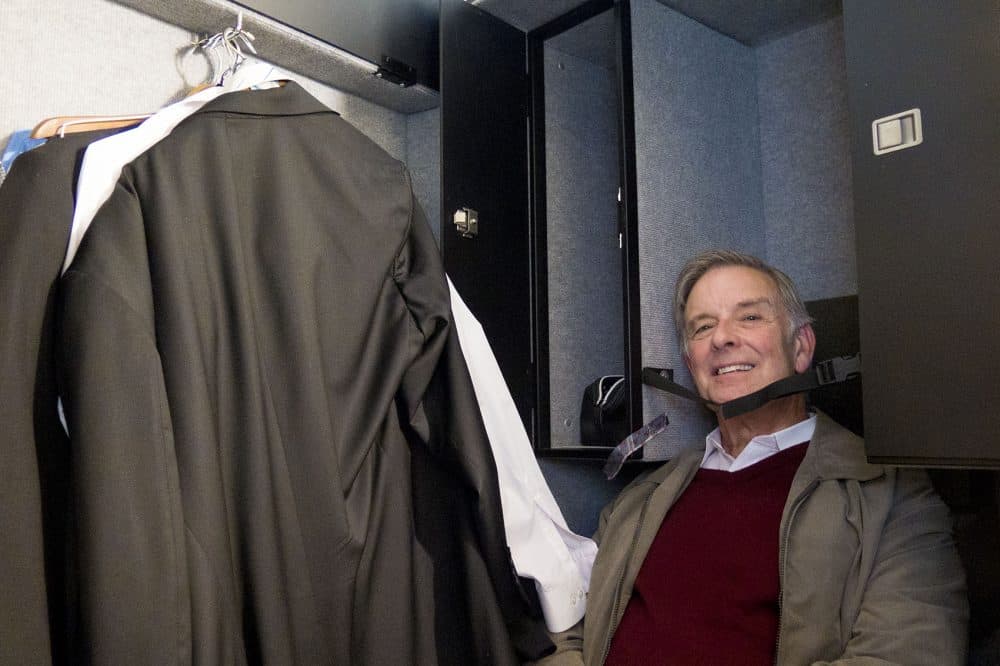
Everything Wolfe will need on his journey goes into this case. He opened it to show me what he’s taking along — and even climbed into it laughing.
“It's very well suited for all manner of clothes -- there are little cubbies for shoes, aspirin, cough drops, water, bow ties.”
Then he stopped and rummaged for a second before finding what he was looking for. “Oh there they are!” he exclaimed with a laugh. “I just threw in some old strings that are very much worn out but — just in case. [Also] repair tools because we all have to learn to do field repairs on these instruments if necessary.”
An even more cumbersome instrument to travel with is the timpani. Tim Genis shows me the eight bright blue trunks that hold those booming, 250-pound kettle drums. He won't see them until he gets to Japan — which is how he likes it after witnessing a nerve-wracking incident with some local handlers helping out on a previous tour.
“I just saw the one guy wheeling the timpani up onto a truck and the timpani almost fell off,” he said. “Some guy caught it — but it was just dumb luck that he caught it. So I was like, OK I don't want to see it. I'll have a heart attack,” Genis added, laughing.
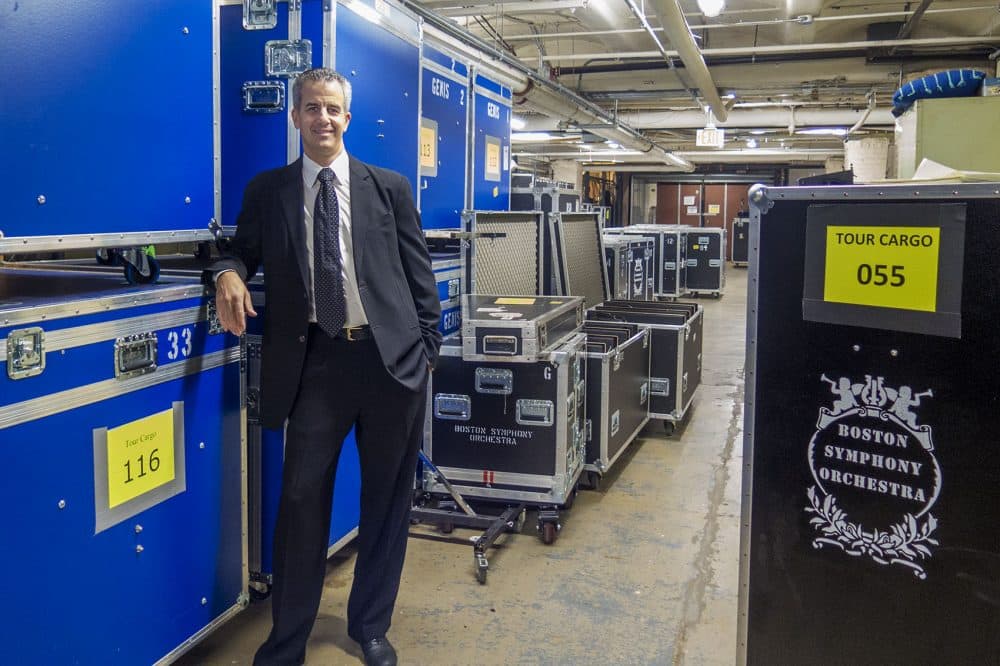
Big instruments are just one of the many logistical challenges. Stage manager Demick also points to increased restrictions for some older instruments that have parts made from endangered species.
“Things like ivory, rosewood,” he said, “pernambuco wood, Varanus -- which is water monitor lizard, which some people have on their frogs on their bows.”
A "frog" is the end part of a stringed instrument's bow. According to the Convention on International Trade in Endangered Species, the BSO must document any affected instruments, which could be inspected by the U.S. Fish and Wildlife Service along the way. Often these pieces are replaced before going abroad.
Violinist Bonnie Bewick told me her bow appeared to have some lizard on it.
“And so I took it to my bow person who re-hairs my bows, and he took one look at it and he said, ‘You know, that's plastic,' ” she recalled, laughing. “So I was off the hook there. But yes, some people had pegs that were rosewood so they had to swap that out.”
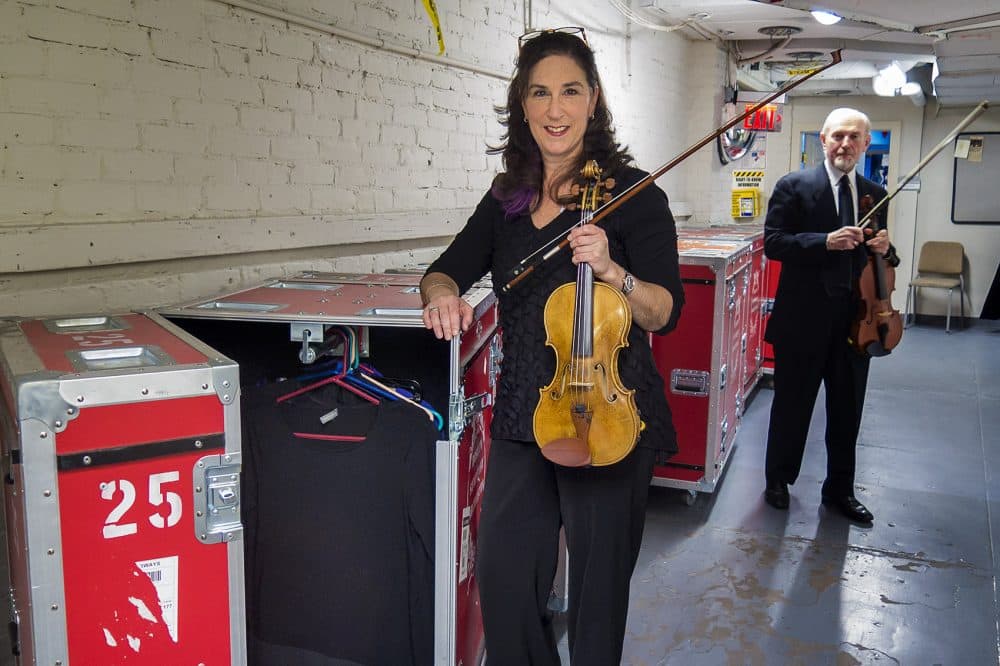
Bewick took me to the red wardrobe trunk she’s sharing with fellow violinist Wendy Putnam. The men’s clothing cases are black so the crew can move them into the appropriate dressing areas at the tour venues. The BSO is transporting a total of 38 violins on tour (two are backups).
With a pair of sequined, black flats in her hands, Bewick told me she’s confident her violin, and the rest of the BSO's instruments, will make it safe and sound to Japan.
“They are really valuable, amazing instruments — but it's kind of like your briefcase. You know, it's your tools of the trade,” she said.
Most of the BSO musicians arrive in Japan Wednesday, where they'll reunite with their instruments in time to acclimate and rehearse before the first concert of their tour, which is in Nagoya on Friday.
This segment aired on October 31, 2017.
